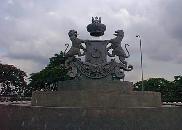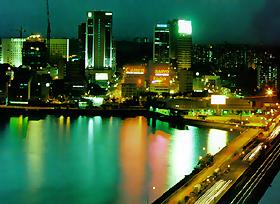![]()
Introduction

State
Capital
Johor Bahru
| Administrative
Divisions 8 (Batu Pahat, Johor Bahru, Kluang, Kota Tinggi, Mersing, Muar, Pontian, Segamat) |
 |
History
The rise of Johor as a political power was precipitated by the downfall of Melaka. Fleeing from the Portuguese invasion of Melaka in the 1511, its last sultan, Sultan Mahmud escaped first to Pahang before settling down in Bintang (currently an island of Singapore). Although Mahmud never succeeded in reestablishing his sultanate in Malacca as he had hoped, he became Johor’s first Sultan.
The history of Johor from the late 1500s to the late 1600s is characterised by a series of succession struggles interspersed with strategic alliances struck with regional clans and foreign powers to maintain its political and economic hold in the Straits. In competition with the Achehs of northern Sumatra and the port-kingdom of Malacca under Portuguese rule, Johor engaged prolonged warfare with their rivals, often striking alliances with friendly Malay states and in particular the Dutch. In 1641 Johor in cooperation with the Dutch succeeded in capturing Malacca. By 1660, Johor had become a flourishing entrepôt, although weakening and splintering of the empire in the late seventeenth and eighteenth century reduced its sovereignty. It would not be until Raffles came to Johor in 1818 that a strong sultanate under Sultan Hussein was instituted.
Modern Johor history began in 1855, when Sultan Ali signed over the entire state of Johor to Dato' Temenggong Daing Ibrahim, with the exception of the Kesang area (Muar), which was finally handed over in 1877. Temenggong Ibrahim opened up Bandar Tanjung Puteri (later to become Johor’s present-day capital) in south Johor as a major town.
Temenggong Abu Bakar superseded Temenggong Ibrahim in 1862 and obtained British recognition as the Sultan of Johor. He initiated several modernization measures during his rule. Tanjung Puteri had a change of name to Bandar Iskandar Puteri. In 1868, the administrative capital was shifted to Bandar Iskandar Puteri from Teluk Belanga. Bandar Iskandar Puteri then had a second change of name to Johor Bahru. Known today as the Father of Modern Johor, Abu Bakar established Johor’s constitution and introduced a modern administrative system.
The increased demand for black pepper and gambier in the nineteenth century lead to the opening up of farmlands to the influx of Chinese immigrants, creating Johor’s initial economic base. The Kangchu system was put in place. Under the British Residency system, Sultan Ibrahim, Sultan Abu Bakar's successor, was forced to accept a British adviser in 1914. D.G. Campbell was dispatched as the first British adviser to Johor.
British administration of Johor lasted until 1941, year of the Japanese invasion. After the war, from 1945 to 1946, Johor was under the jurisdiction of the British Military Administration.
The British in London formed the Malayan Peninsula Planning Unit in 1943, and on 10 October 1945, the Malayan Union scheme was laid out before the British Parliament. A day later, Sir Harold MacMichael was sent to the Malayan Peninsula to obtain the agreement of the Malay Rulers. According to this agreement, Penang, Malacca and nine other Malay states were united under the Malayan Union.
Malay opposition derailed the Malayan Union plan, and the Malays under Dato' Onn Jaafar's leadership formed the United Malays National Organisation (UMNO) on 11 May 1946. The Malay Federation was founded on 1 February 1948, the first step towards independence, and on 31 August 1957, independence was achieved.